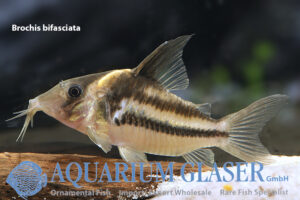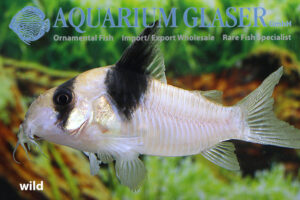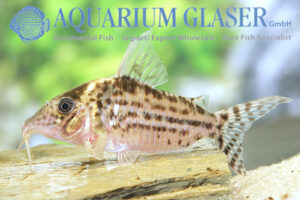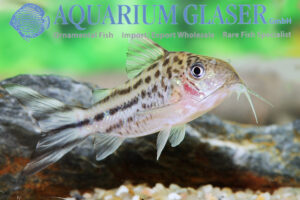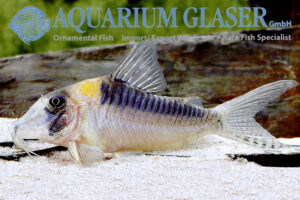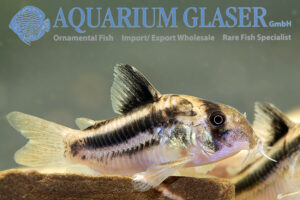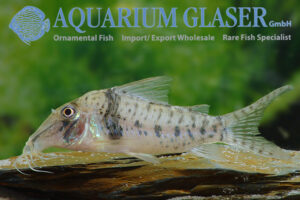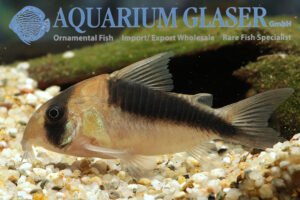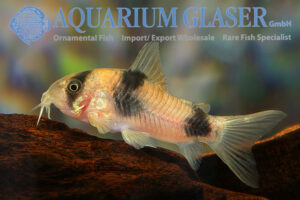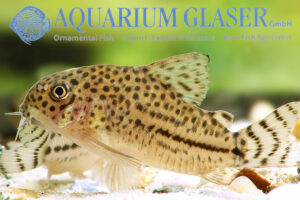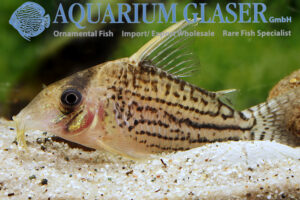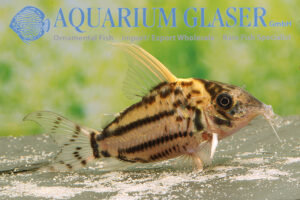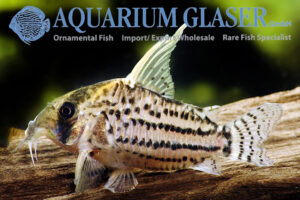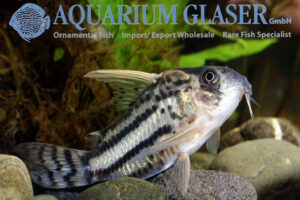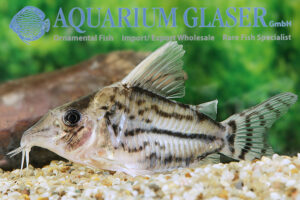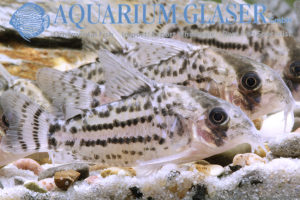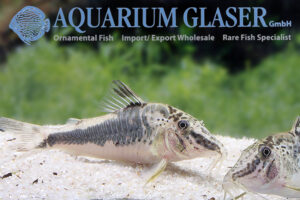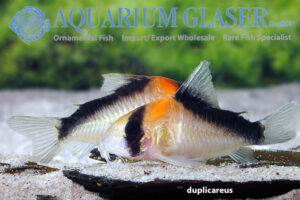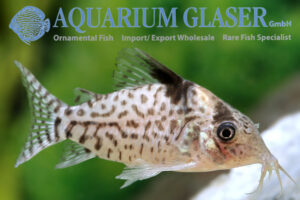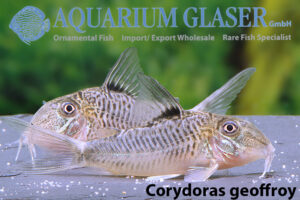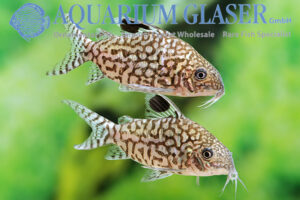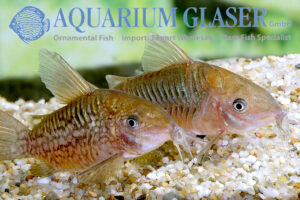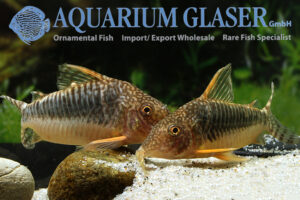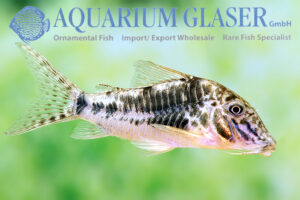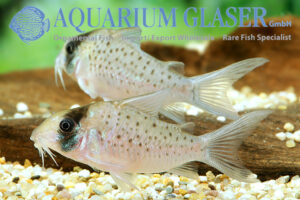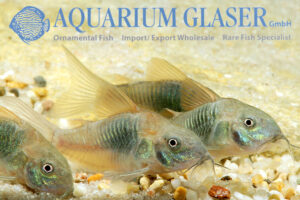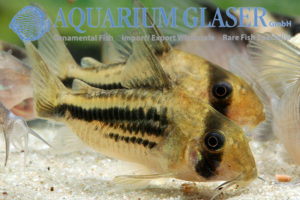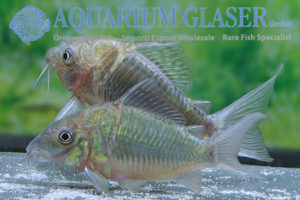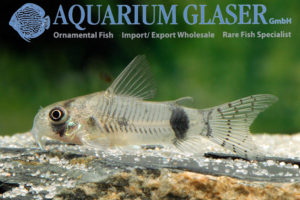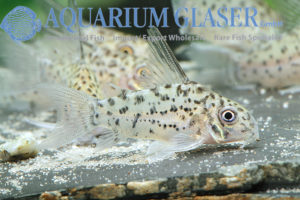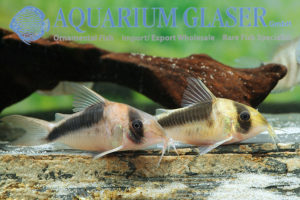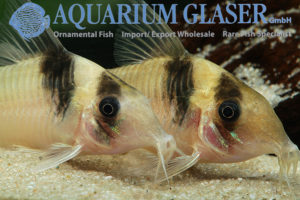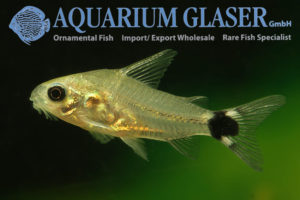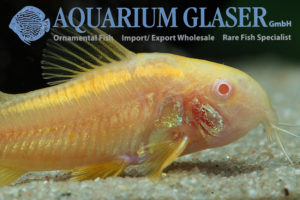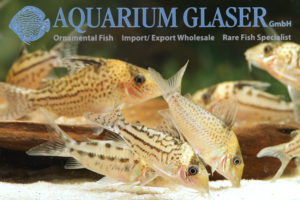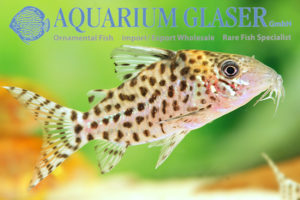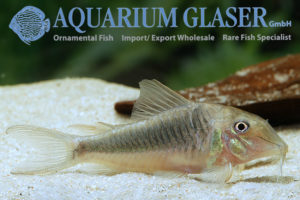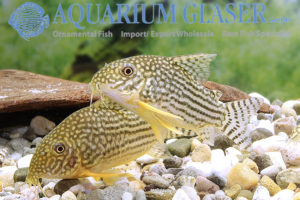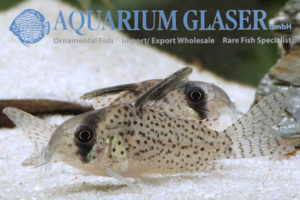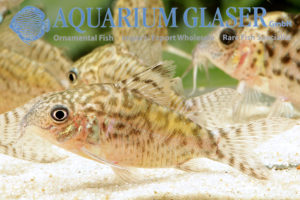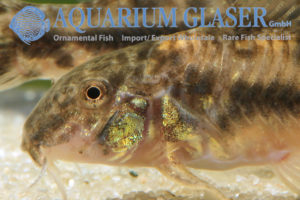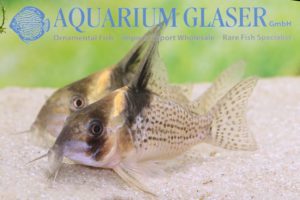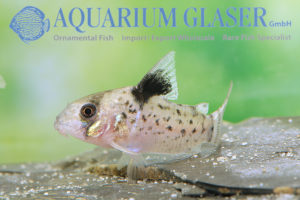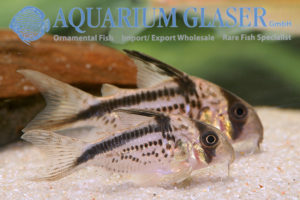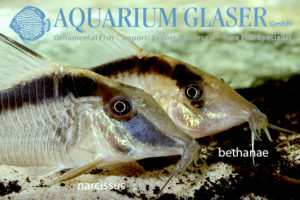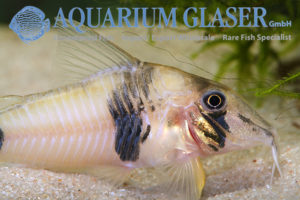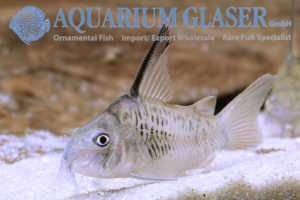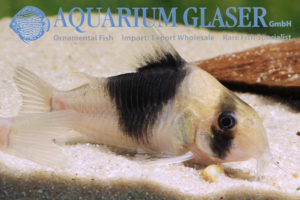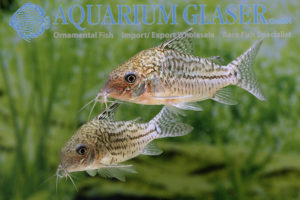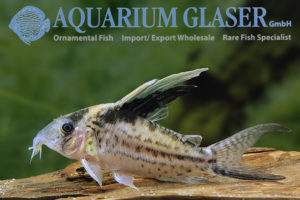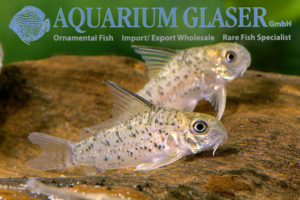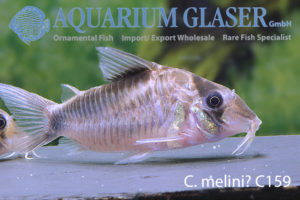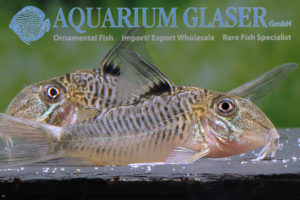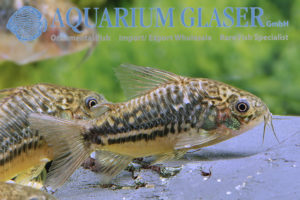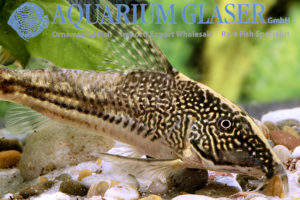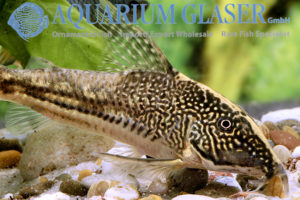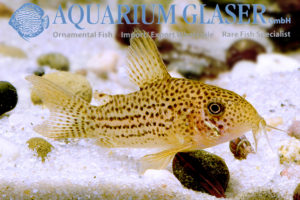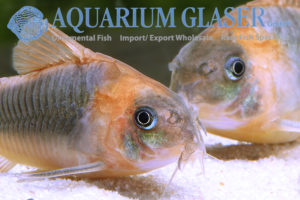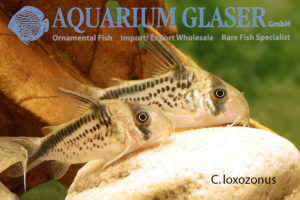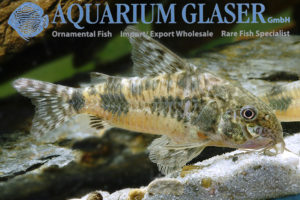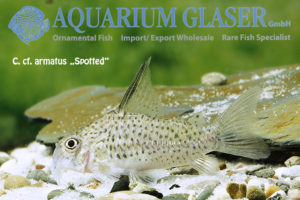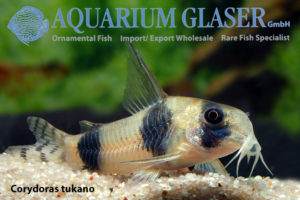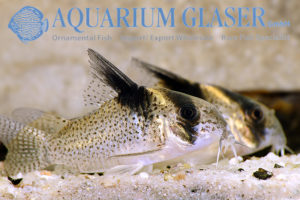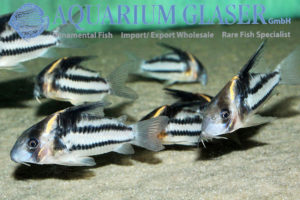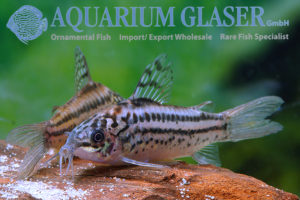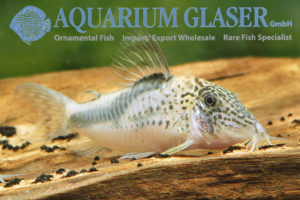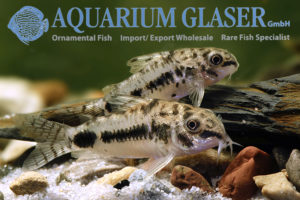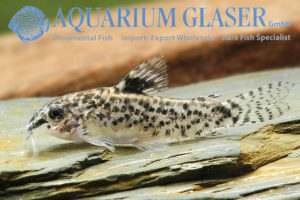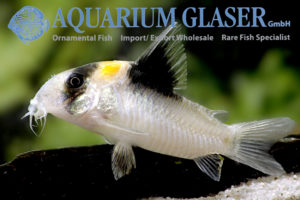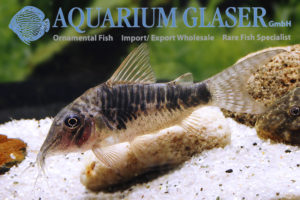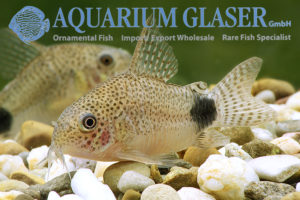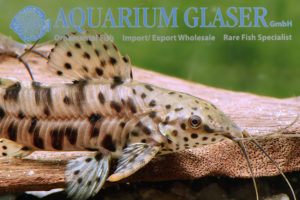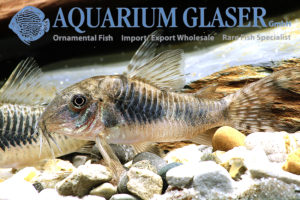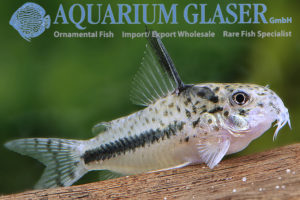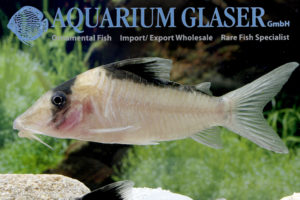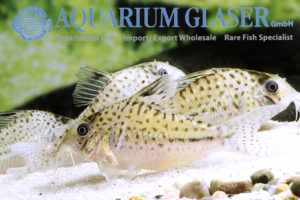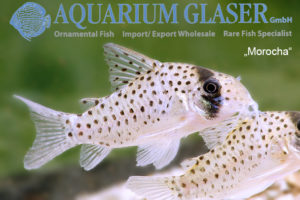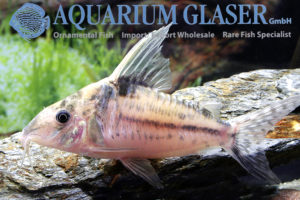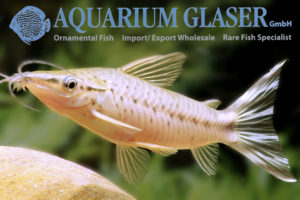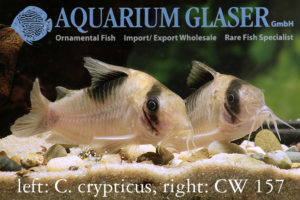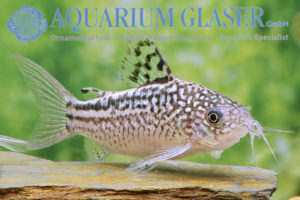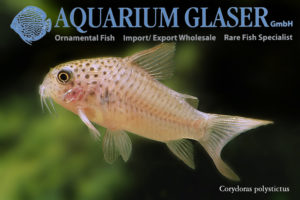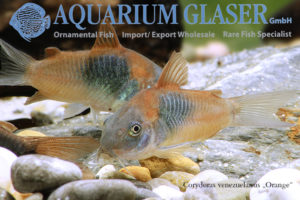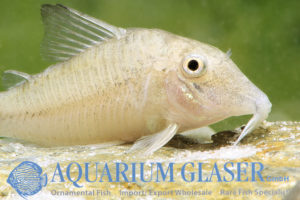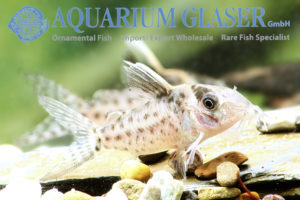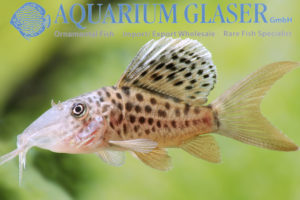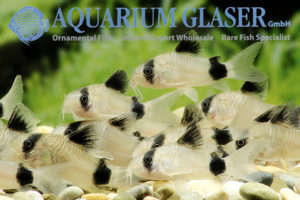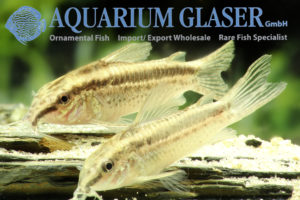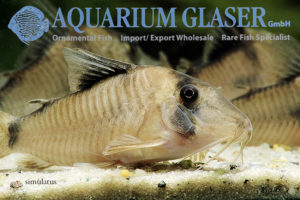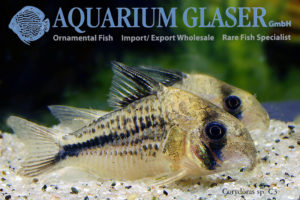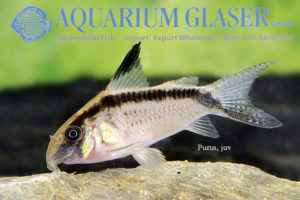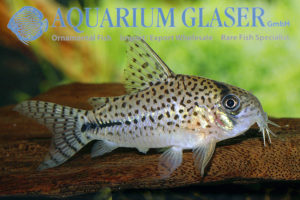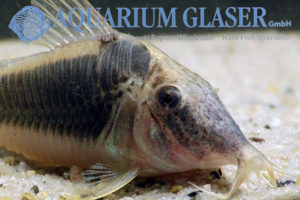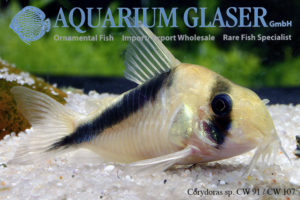Given the current (June 2025) 159 C-numbers and 216 CW-numbers, you would think that all 203 scientifically accepted species of the subfamily Corydoradinae (i.e. Aspidoras, Brochis, Corydoras, Gastrodermus, Hoplisoma, Osteogaster and Scleromystax) would be appearing more or less regularly in the hobby. But this is not the case. Two longnosed species from the Rio Tapajós […]
10a. Catfishes: Corydoras & Co. (210)
-
-
Hoplisoma (formerly Corydoras) sp. CW49
Two beautiful new panda catfish (Hoplisoma) arrived from Colombia in 2010. As these species have not yet been scientifically studied, they have been assigned the code numbers CW49 and CW51. At first there was some confusion as to whether they were different species or just two color forms of the same species. Both have already […]
-
Brochis sp. C156 Rio Purus
The armored catfish of the Rio Purus in Brazil have an enormous variety of forms, which is really hard to see through. In addition to the already variable coloration, there are also differences in the color pattern at different ages. Almost every attempt at identification leaves doubts, at least for individual animals. It is therefore […]
-
Brochis robineae
Brochis robineae (formerly: Corydoras robineae) stands out from the large number of armored catfish species that exist due to its unique tail fin pattern. Only in B. robineae is the caudal fin horizontally striped (in all other species it is colorless or vertically striped). Such a striking caudal fin pattern is also rarely found in […]
-
Corydoras serratus
The saddle-snouted Corydoras serratus from the upper Rio Negro region in Brazil is one of the most sought-after armored catfish. Because the saddle-snouted Corydoras, in contrast to the long-snouted and round-snouted former (now assigned to other genera) Corydoras, tend to be solitary fish, they cannot be caught economically in large numbers. This and the fact […]
-
Hoplisoma cf. axelrodi CW169
A whole range of armored catfish species are exported from Colombia under the fantasy name “Corydoras deckeri”. They all originate from the large Rio Meta system, but more precise information is rarely available. One of the most frequently offered “deckeri” species is Hoplisoma axelrodi. This beautiful armored catfish has been very popular for decades and […]
-
Corydoras orcesi
The beautifully marked Corydoras orcesi is only very rarely found in the aquariums of enthusiasts. The species has been described from the Rio Tigre system in Ecuador, originally as a subspecies of C. pastazensis. Both species are similarly colored, but no hybrid forms occur, so that they are in all probability independent species, even if […]
-
Hoplisoma sp. CW 91/CW 107
The Rio Vaupés – the Spanish spelling – or Rio Uaupes – the Portuguese spelling – is a “small” right-bank tributary of the Rio Negro. After all, the “little one” has a length of 1,375 km! It rises in Colombia in the foothills of the Andes and forms the state border with the Brazilian state […]
-
Hoplisoma (previously: Corydoras) weitzmani
Over the decades, we have often witnessed the rise of a new star in the ornamental fish sky. Among the armored catfish, this was undoubtedly Hoplisoma weitzmani, which went from being a sought-after phantom to a species that is now firmly established in the range. Our first posts on this animal appeared in 2007: https://www.aquariumglaser.de/en/10-catfishes/10a-catfishes-corydoras-co/corydoras_weitzmani_en/ […]
-
Hoplisoma knaacki ( = Corydoras knaacki)
Hoplisoma knaacki originates from the Madre de Dios region in Peru and belongs to a group of armored catfishes that are very close to the type species of the genus Hoplisoma Swainson, 1838 – H. punctatus (Bloch, 1794). Aquarists are best familiar with the two species H. julii and H. trilineatus from this group, which […]
-
Brochis sp. “Super Schwartzi Hifin Longnose” ( = Corydoras sp. “labrina” or “labrea”)
The characteristics of Brochis sp. “Super Schwartzi Hifin Longnose” are identical to Hoplisoma sp. “Super Schwartzi Hifin CW28”, except that Super Schwartzi Hifin Longnose is a longnose and Super Schwartzi Hifin CW28 is a roundnose. Brochis sp. “Super Schwartzi Hifin Longnose” has usually only appeared in single specimens mixed with the other species from the […]
-
Brochis sp. “CW28 Longnose” ( = pulcher variant)
The characteristics of Brochis sp. “CW28 Longnose” are identical to Hoplisoma sp. “CW28”, but Brochis sp. “CW28 Longnose” is a longnose, CW28 a roundnose. This species is usually sent mixed with CW28, but occasionally also mixed with Brochis pulcher. We have often received this species purely sorted as Brochis pulcher. In the aquarium literature, Brochis […]
-
Hoplisoma sp. “Super Schwartzi Hifin CW28”
The characteristics of Super Schwartzi Hifin CW28 are: Round snout; two thin longitudinal bands, sometimes resolved to dots, running parallel, one above and one below the midline; usually two more thin longitudinal bands are present, so usually four in total; the dorsal fin spine is conspicuously cream-colored; the dorsal fin is conspicuously high in males […]
-
Hoplisoma sp. CW28 ( = cf. pulcher)
The characteristics of CW28 are: Round snout; two broad, parallel longitudinal bands on the bony plates, one above and one below the midline; the dorsal fin spine has a conspicuous cream color. The maximum length is 6-6.5 cm (standard length without caudal fin). CW28 has been known in the hobby since the 1960s. A specimen […]
-
Brochis pulcher
The Rio Purus is one of the major tributaries of the Amazon. Its length is over 3,200 km. The source and upper reaches of the Rio Purus are in Peru, the middle and lower reaches are in Brazil. The Rio Purus is home to numerous ornamental fish, including various armored catfish. A species flock of […]
-
Hoplisoma schwartzi (= Corydoras schwartzi)
This well known, but still beautiful Hoplisoma originates from the Rio Purus system in Brazil. It was named in honor of the exporter Willy Schwartz. In Hoplisoma schwartzi, which belongs to the stocky, round-headed members of the genus, the dorsal fin is marked very slightly differently in each animal, the coloration of the spine ranges from […]
-
Corydoras semiaquilus
Three magnificent Corydoras species from Peru undoubtedly form a closely related group. They are very pointed-headed and comparatively large (around 6 cm, sometimes up to 8 cm) Corydoras, namely C. fowleri, C. coriatae and C. semiaquilus. The independence of C. coriatae is often doubted, as numerous locality variants of C. fowleri have become known and, […]
-
Hoplisoma adolfoi and H. duplicareus (formerly: Corydoras)
We receive these beautiful armored catfish both as captive-bred and wild-caught specimens. Both are currently classified in the genus Hoplisoma. The correct species identification of these animals is still unclear. There are clearly two types, a high-backed one with a very broad dorsal band (duplicareus) and a slimmer one with a narrow dorsal band (adolfoi). […]
-
Corydoras ambiacus (now: Brochis ambiacus)
Corydoras ambiacus is one of the longest known species of the enormously diverse armored catfish, which has recently been assigned to the genus Brochis in a major review of armored catfish. The species Corydoras ambiacus was formally described from the Rio Ambyiacu in Peru as early as 1872. At that time, only 5 Corydoras species […]
-
Corydoras have been revised – “new” genus names!
The armored catfish (Callichthyidae) are a species-rich family that occurs exclusively in South America. There are two subfamilies, the callichthyid catfishes (Callichthyinae) and the corydoras-like armored catfishes (Corydoradinae). The latter are particularly species-rich. Currently (June 2024), 231 species are considered to be described, 171 of which are generally recognized as valid; in addition, there are […]
-
Corydoras reticulatus
We are once again able to offer fully grown Corydoras reticulatus from Peru. C. reticulatus can be easily distinguished from the similar species Corydoras sodalis (see: https://www.aquariumglaser.de/en/10-catfishes/10a-catfishes-corydoras-co/corydoras-sodalis-2/) by the deep black spot on the dorsal fin. The maximum length of C. reticulatus is around 6-7 cm in total, including the caudal fin. The species makes […]
-
Corydoras pantanalensis C5 Bred
Highly sought-after, large, magnificent and rarely on offer: this is Corydoras pantanalensis, which was given the code number C5 before its scientific description. For general information on the species, see here: https://www.aquariumglaser.de/en/10-catfishes/corydoras-pantanalensis-2/ We are very pleased to be able to offer some offspring of this species in the 3-4 cm size. The fish were bred […]
-
Corydoras seussi
In the huge variety of species of Corydoras, four species stand out in particular due to their bright orange pectoral and dorsal fin spines: Corydoras sterbai, the associated long-snouted C. haraldschultzi, C. gossei and its long-snouted counterpart C. seussi. We aquarists are naturally delighted by this sight, but we should not forget that these are […]
-
Corydoras sarareensis ( = C23)
It has been almost 20 years since we were able to offer this beautiful armored catfish from Brazil. Corydoras sarareensis, which was given its species name after the Rio Sarare from which it originates, was only scientifically described in 1995. Prior to this, the species was known as “C23” in the hobby. The Rio Sarare […]
-
Corydoras sychri
The beautiful Corydoras sychri from Peru – it lives in the Rio Nanay – is unfortunately only occasionally available. We currently have very nice, large specimens in stock. There are some species that can be confused with C. sychri. The best known is C. atropersonatus, which also comes to us from the Rio Nanay. C. […]
-
Corydoras sp. aff. aeneus “CW26”
The Bronze Corydoras, Corydoras aeneus, is – this may be surprising – very poorly researched. We know armored catfishes that roughly correspond in appearance to C. aeneus from practically all of South America, we also know the appearance of animals from Trinidad (the place from which C. aeneus was scientifically described). We know that Bronze […]
-
Corydoras axelrodi (“deckeri”)
Since many decades Corydoras catfishes are sold from Colombia under the fancy name “Corydoras deckeri”. Where this name comes from is not documented, probably there was once an exporter named Decker, but nobody knows about him today. The “Corydoras deckeri” come from the Rio Meta. Behind the name there are four different Corydoras species: Corydoras […]
-
Brochis splendens “Peru“
From the upper Amazonas drainage in Peru we regularly receive the beautiful emerald catfish, Brochis splendens. From this region no less than four synonyms of this armored catfish, distributed in three genera (Brochis, Chaenothorax and Corydoras) were described by the famous biologist Edward Drinker Cope (1840-1897)! This shows very clearly how different the fish can […]
-
Corydoras ortegai (CW31)
This cute corydoras is relatively new. It was scientifically described only in 2007. In the hobby it was known a bit longer as “Loreto Panda”, “New Panda” and under the code number CW31. The CW-numbers are assigned on the homepage of Ian Fuller (https://www.corydorasworld.com/). The complete distribution of the pretty species is not yet known. […]
-
Corydoras loretoensis
The extremely great popularity of the Corydoras in aquaristics is certainly due to the combination of peacefulness, usefulness and nice appearance that these fish combine. They all have these characteristics, and so you really can’t go far wrong when it comes to deciding which species to choose for your aquarium. But there are subtle differences […]
-
Corydoras sp. CW 89/CW 106
The Rio Vaupés – so the Spanish spelling – or Rio Uaupes – that is the Portuguese one – is a “small” right tributary of the Rio Negro. After all, the “little one” has a length of 1,375 km! It rises in Colombia in the foothills of the Andes and forms the state border with […]
-
Corydoras virginiae
At the moment we have one of the most beautiful corydoras from Peru in our stock, which contributed with the number “C4” more than 25 years ago to create a real corydoras boom. The species is one of the distinct schooling fishes within the genus Corydoras. In addition, C. virginiae is a very lively species, […]
-
Corydoras hastatus
Now is the season for the southern dwarf cory Corydoras hastatus. We get this cute Corydoras, which grows to about 2-3 cm long, from Paraguay. In contrast to most other Corydoras, C. hastatus is less bottom bound. He swims just as gladly in the free water. Often schools of C. hastatus are mixed with several […]
-
Corydoras sp. aff. aeneus Neon Goldstripe Albino
Albinos occur in all animal species, including humans. Due to a mutation they lack the ability to form black pigments completely or partially. In nature, albinos are extremely rare, because they are too conspicuous and thus quickly become the victim of predators, in human care albinos occur sooner or later in all animal species. Since […]
-
Corydoras sp. CW113
Just as indeterminate sucker catfishes (Loricaridae) receive L and LDA numbers, indeterminate armored catfishes (Corydoras) receive C and CW numbers. The very first C-number assigned was given in 1992 by Werner Seuß to a Corydoras from the upper Rio Negro (Rio Icana). This fish is remarkable in many ways, but the most striking is: there […]
-
Corydoras sp. “punctatus Nanay”
From the Rio Nanay in Peru comes this beautiful spotted armored catfish, which probably belongs to a scientifically undescribed species. It was first mentioned and pictured in aquaristic literature as Corydoras punctatus in the 1930s, but C. punctatus is a completely different species that looks similar to C. julii. Later, the “Nanay” was sometimes assigned […]
-
Corydoras treitlii
The long-nosed Corydoras treitlii from the lower Amazon – specimens caught for export mostly come from the Belem area – is one of the real rarities in the trade, although the species is one of the longest known armored catfishes. It was scientifically described already in 1906. With over 7 cm maximum length C. treitlii […]
-
Corydoras sterbai WILD
The splendid Corydoras sterbai probably knows every aquarist child. As one of the most beautiful corydoras at all it belongs to the standard offer of the pet trade and is bred in large quantities; there is also an albino breeding form, which does not occur in the wild. Wild Corydoras sterbai from the Rio Guaporé […]
-
Corydoras kanei
This pretty, at most 5 cm long corydoras wandered for many years under different names through the aquariums, until it was finally described in 1997 by Steven Grant as an independent species: Corydoras kanei. Unfortunately the description is flawed by the fact that the type specimens came from the trade and therefore the type locality […]
-
Corydoras “punctatus” Nanay
There is a saying: “The Internet forgets nothing”. This may be true, but books are even more durable, especially if errors have been printed in them. These are often so stubborn that one could almost despair. This is what happened to a very pretty armored catfish that occurs in huge numbers in the tri-border area […]
-
Corydoras sodalis (incorrect as agassizii).
There are four species of beautiful corydoras, which are practically without exception available as wild collected specimens from Brazil, because even experienced breeders have a hard time with them. In addition, these species occur in masses and can therefore be offered in large numbers and very cheaply, so there is little incentive to breed them. […]
-
Aspidoras raimundi “Ceará”
The representatives of the genus Aspidoras are popularly also called loach armored catfishes, which is quite a good description. Because the animals are slimmer and more scurrying, than one is generally used to from Corydoras. With 25 species recognized so far, the genus is quite species rich. Their identification is difficult for non-specialists, because species […]
-
Corydoras cf. brevirostris CW 27 Highfin
We received a limited number of this extraordinary Corydoras from Colombia. The overall appearance is very much alike Corydoras brevirostris (formerly known as Corydoras melanistius brevirostris), but CW 27 has a much much higher dorsal fin and the “glowspot” on the nape is much brighter. For our customers: the animals have code 224954 on our […]
-
Corydoras leucomelas
Corydoras leucomelas belongs to the frequently imported species of its genus. Typical characteristics of the round-nosed species are a strongly pronounced eye band, the coloration of the dorsal fin in connection with the black dorsal spot located at the beginning of the dorsal fin, a vertical black band at the end of the caudal peduncle […]
-
Corydoras loxozonus
This Corydoras belongs to the most attractive and at the same time easy to keep species of the large genus Corydoras. One should only consider that C. loxozonus – it originates from the Orinoco and its tributaries – likes it warm; below 24°C the temperature of the water should not sink in the long run. […]
-
Corydoras narcissus and Corydoras bethanea (= C. sp. “Narcissus II”; CW6)
The changed export regulations in Brazil, which have been valid for some time, have now made it possible to import Corydoras narcissus again after a long time. Corydoras narcissus is a beautiful, relatively large armored catfish. The maximum length is given with 10 cm. The species comes from Brazil, more precisely from the drainage of […]
-
Corydoras desana
There are still Corydoras species which are imported so rarely and in such small numbers that they belong to the unfulfilled dreams of armored catfish lovers. One of the most attractive species of this group is certainly the “Tukano Longnose”, as it was first named, then it received the code CW011 and finally the species […]
-
Corydoras armatus
In the last years we reported more often about Corydoras imports, which are similar to Corydoras armatus (= sp. aff. armatus or cf. armatus), but not identical. Now we received again the “real” C. armatus from Peru. The enormously high dorsal fin is really an eye-catcher. In addition it is always carried tautly upright, which […]
-
Hoplisoma (formerly Corydoras) sp. CW 51
The “New Pandas” from Colombia belong to the most attractive and at the same time easy to keep and breed corydoras of the last years. There are two forms/species, CW 49 and CW 51, which differ clearly in the shape of the black saddle spot. Currently we have beautiful CW 51 in different sizes in […]
-
Corydoras sodalis Colombia
Widespread species often show coloration differences in the different parts of the distribution area. So also the beautiful Corydoras sodalis, which is reported from Peru, Brazil and Colombia. From Colombia we could now import C. sodalis, which differ quite clearly in color and figure from e.g. animals imported from Brazil (see https://www.aquariumglaser.de/en/fish-archives/corydoras-sodalis-2/). For our customers: […]
-
Corydoras robustus
This Corydoras belongs with 9-11 cm of total-length to the biggest and most splendid species of the genus at all. Both sexes develop, when they are sexually active, long dorsal fins. The males can be recognized by the additional long ventral fins. At the moment we have wonderful, fully grown, well settled animals in stock. […]
-
Corydoras sp. “Ogawae” CW86 (cf. armatus)
Corydoras armatus is a rather distinctive cory from Peru. We have also received this beautiful species, which is notable for its particularly high dorsal fin, from Venezuela from time to time (see https://www.aquariumglaser.de/fischarchiv/corydoras_armatus_venezuela_de/). Geographically this all fits together well, the catching regions both belong to the upper drainage of the Amazon. However, there is a […]
-
The “real” Corydoras melini?
One of the most important arguments for importing wild-caught fish for aquaristics is the gain in knowledge it allows. For the majority of small fish species this is only possible by observing living specimens. Without this there is no species knowledge, without species knowledge there is no species conservation. A wonderful example of the above […]
-
Corydoras geoffroy
For a long time this fish, the type species of the genus Corydoras, was a mystery. Until today it is a top rarity among the armored catfishes. And so we are especially pleased to be able to offer offspring of this precious fish once again. The animals are still a bit inconspicuous, so we would […]
-
Corydoras undulatus Paraguay
The beautiful Corydoras undulatus belongs to the relationship of C. elegans. Like most representatives of this group the species swims rather in free water than on the ground. Also typical for the group is that males and females differ clearly in color. In the case of C. undulatus the males become very dark with bright […]
-
Scleromystax barbatus
The changed legal situation in Brazil now makes the import of several species from the south of Brazil possible again, which for many years were only available as offspring, among them the magnificent Scleromystax barbatus (formerly Corydoras b.). We have been able to import a good number of wonderful, fully grown specimens. For more information […]
-
Scleromystax barbatus
The changed legal situation in Brazil now makes the import of several species from the south of Brazil possible again, which for many years were only available as offspring, among them the magnificent Scleromystax barbatus (formerly Corydoras b.). We have been able to import a good number of wonderful, fully grown specimens. For more information […]
-
Corydoras eversi (C65)
The very nice Corydoras eversi lives in the Araguaia drainage (Brazil) and became known as C 65. It was only scientifically described in 2016. The scientific treatment of C. eversi is based on a collection by Hans-Georg Evers in 1998, who was also able to bring living animals with him. As mentioned, they were initially […]
-
Coryoras eques
From the Brazilian state of Amazonas, more precisely from the surroundings of the city of Anori, we once again received a good number of a beautiful armored catfish, which is known to science for a long time, but rarely appears aquaristically: Corydoras eques. This typical schooling Corydoras looks most attractive when kept in black water. […]
-
Corydoras loxozonus and C. sp. aff. C16
Corydoras loxozonus belongs to the beautiful armored catfishes, which we receive relatively regularly from Colombia. The species is quite variable in pattern and therefore has already received the C-numbers C79 and C83. There was never any “proof” that these C-numbers really belong to the species C. loxozonus; this was only concluded from the fact that […]
-
Corydoras elegans C123
The beautiful Corydoras elegans is widely distributed in the Amazon region and locally forms numerous color forms. Possibly all these variants are even independent species, but scientifically this has not been investigated yet. A color variant from the Rio Nanay in Peru stands out above all by yellow-orange tinted fins. Some males (they have higher […]
-
Coyrdoras paleatus wild
Only very rarely we receive wild collected Corydoras paleatus. Imports of this species, which is widespread in southern South America, didn´t appear for more than 10 years, because many export stations in southern Brazil had to close down when some of the most important ornamental fishes of the region were forgotten on the Brazilian positive […]
-
Corydoras cf. armatus “Spotted Putumayo“
From Colombia we received a nice Corydoras species, which threw us into some confusion during identification. They were sent as C. armatus, a species described from the Rio Huallaga, a right-bank tributary of the Rio Maranon (the larger of the two headwaters of the Amazon) in Peru. C. armatus is a conspicuously high-backed species with […]
-
Corydoras reynoldsi & Corydoras tukano
Corydoras reynoldsi is a pretty cory catfish that has been described in 1960. It was collected in the Caquetà province, eastern Colombia. It remained unknown in the hobby quite long, as this area is far away from the usual collecting areas. In 1997 the cory enthusiasts became aware of another, quite similar species of Corydoras […]
-
Corydoras sp CW 98
This beautiful Corydoras belongs to a scientifically undescribed species. It originates from the upper Rio Negro in Brazil. Because of the bright orange neck spot it is usually misidentified as Corydoras burgessi, which also comes from this region, especially as C. burgessi has a very variable pattern and there are also spotted colour variants of […]
-
Corydoras sp. aff. parallelus CW127
Just as L-numbers are assigned for undetermined loricariids, C- and CW-numbers are assigned for undetermined Corydoras. One of the first species to receive such a number was Corydoras parallelus, which was assigned the number C2 in 1993. In the same year Burgess described it as C. parallelus. The species originates from the upper Rio Negro […]
-
Corydoras elegans
The armored catfishes of the closer relationship around Corydoras elegans belong to the most interesting species of this huge genus. They do not live as strongly bottom-bound as most other armored catfishes and are very nicely colored. Males and females differ relatively clearly in coloration. However, it is not easy to provide a color description […]
-
Corydoras fowleri German bred
Corydoras fowleri from Peru becomes 6-8 cm long and certainly belongs to the most beautiful Corydoras at all. Nevertheless, the species is only rarely bred, because the eggs are relatively small and the fish – despite their size – relatively unproductive. Therefore we are especially pleased to be able to offer wonderful German bred ones […]
-
Corydoras habrosus
Now it is season for the cute chessboard dwarf cory, Corydoras habrosus. The fish grows to a maximum of four centimeters. It is completely peaceful and leaves the plants in peace, so it is very suitable for community aquariums. The usual care-recommendations for Coryoras are valid, which means they should be kept in groups and […]
-
Aspidoras pauciradiatus
This cute dwarf armored catfish reaches a maximum length of only 3 cm. Aspidoras pauciradiatus comes from the central Rio-Negro area and is an ideal community fish for characins, dwarf cichlids etc. Strangely enough, the specimens on which the scientific description is based were allegedly collected in the Rio Araguaia near the town of Aruana, […]
-
Brochis splendens “Rio Negro
Via Manaus we have been able to import splendid Brochis splendens. The Emerald Cat comes from a huge area, from Peru to the Pantanal in Brazil; based on the experience with other Corydoras it is more than likely that there are several species hiding behind the name “Brochis splendens”. But such things should be subject […]
-
Corydoras burgessi
Now the season for the very beautiful and much beloved orange blotch corys has started. There does exist a good number of different species and varieties, all have in common a brightly shining spot on the neck. Depending on light this glows from yellow to almosr red. This glowing spot helps the fish in the […]
-
Corydoras sp. Souza, C124
We received very nice, fully grown specimens of this only very rarely available species from Peru. This species of Corydoras is very variable in respect of the pattern. However, we think the darkest animals are the males. For our customers: the fish have code 225215 on our stocklist. Please note that we exclusively supply the […]
-
Corydoras caudimaculatus Wild
From the Brazilian state of Mato Grosso, more precisely from the upper Rio Guaporé, comes the pretty Corydoras caudimaculatus, which reaches 5-6 cm in length. C. caudimaculatus is the most round-nosed and high-backed species of the “tail-spotted armored catfish”, which all have a similar pattern, but without being closely related to each other. The evolutionary […]
-
Megalechis thoracata
The Port Hoplo Megalechis thoracata – maybe the synonym (now invalid) name Hoplosternum thoracatum is more familar to some readers – is one of the earliest aquarium fish at all. The fish has only one real disadvantage: the maximum size, which is about 15 cm (or sometimes even larger). However, the species has a comparatively […]
-
Corydoras aurofrenatus
For the first time, we have this beautiful Corydoras, that was described already 1903 from Paraguay, as bred ones in stock. However, there is no possibility to distinguish the Corydoras aurofrenatus from C. ellisae, which was also described from Paraguay in 1940. Therefore both species were synonymised by Axenrot and Kullander in 2003, the name […]
-
Corydoras sp. “Peru”
Sometimes it is coincidence that determines whether a fish species can establish itself in the hobby. In the case of this Corydoras sp. Peru, a Corydoras fan noticed the fish when visiting a wholesaler; they were so-called by-catches that had been sorted out. Unfortunately, the wholesaler could not remember exactly where the animals originally came […]
-
Corydoras sipaliwini
There are three beautiful, very closely related, small (4-5 cm) armored catfish species on the Guyana Shield in South America, which look so similar to each other that they have already been seen as synonymous with each other in the past: Corydoras bondi, C. coppenamensis and C. sipaliwini. However, most lovers of Corydoras share the […]
-
Corydoras cf. imitator C140 Red Spot
Again and again we receive imports of Corydoras from the upper Rio Negro area, which differ in details from the well known Corydoras adolfoi, C. duplicareus, C. imitator, C. serratus & Co. It is difficult to classify them in such cases. Are these only colour variations that occur in large numbers somewhere? Are they geographically […]
-
Corydoras orphnopterus
216 scientifically described Corydoras species, of which 163 are generally accepted as valid (this number is, of course, constantly changing, as of March 2020), 159 C-numbers and 160 CW-numbers: one should think that gradually all Corydoras are sufficiently known. But there are still several species which are known only because of their scientific description and […]
-
Corydoras cf. atropersonatus “Morocha“
For the first time ever we have received a very attractive Corydoras (called „Moriocha“) from Peru (unfortunately not more details), which looks very similar to Corydoras atropersonatus (this species also comes from Peru – Rio Nanay basin – and we have received this at the same time), but is even more attractive. Corydoras atropersonatus has […]
-
Corydoras robustus
This Corydoras belongs with 9-10 cm of total-length to the biggest and most splendid species of the genus at all. Both sexes develop, when they are sexually active, long dorsal fins. The males can be recognized by the additional long ventral fins. At the moment we have wonderful, fully grown, well settled animals in stock. […]
-
Dianema urostriatum
The most beautiful species of the Callichthyinae relationship is undoubtedly Dianema urostriatum. The striking black and white striped caudal fin indicates its origin: water coloured dark brown by humic substances. Here, fish that prefer to live in groups need signals that allow them to recognize themselves even in poor visibility. Cardinal tetras, which live in […]
-
Corydoras crypticus and Corydoras cf. crypticus CW 157
The high number of varierties of Corydoras in the upper Rio Negro is very confusing and even Corydoras experts in some cases have great difficulty in addressing the very similar species. A controversial species from the beginning is Corydoras crypticus, which was described together with C. amandajanea in 1995. The main difference between C. crypticus […]
-
Corydoras elegans “Peru”
There are several species of Corydoras, which even pronounced specialists are not able to distinguish. In such cases it might be useful to speak of species groups instead of species. One such example is the species group around Corydoras elegans in the narrower sense, which includes C. elegans, C. napoensis, C. nanus and several C- […]
-
Corydoras polystictus and C. albolineatus
We currently have two rarely available species of Corydoras in stock, which look very similar to each other: Corydoras polystictus and C. albolineatus. The former has a wide distribution in southern South America, while the latter was discovered comparatively late and described from the Rio Itanez in Bolivia. However, our specimens come from the Brazilian […]
-
Corydoras venezuelanus “Orange” and C. sp. “Venezuela Black”
Such a pretty little fish and such an ugly confusion about the name! Corys, which look like the bronze cory, Corydoras aeneus, appear in whole South America. However, these are certainly different species, there is general agreement. Only – how to name them correctly? Whether the cory, which is currently called Corydoras venezuelanus “Orange” in […]
-
A white Corydoras sp. C124
We get the rare long nosed Corydoras sp. C124 occasionally under the names C. cortesi (that is another species from Colombia) or Corydoras “Huangana” (so one calls the wild pigs of the species white-lipped peccary) from Peru. C124 has a very variably pattern, each individual can be recognized by his special pattern. But this time […]
-
Corydoras robustus BRED
The magnificent Corydoras robustus belongs to the biggest species of its genus. Up to 95 mm standard length (i.e. without caudal fin) have already been measured in females of this species. Females become somewhat bigger than the males. Both sexes develop long dorsal fin rays, what looks very nice. For more pictures of adult animals […]
-
Brochis multiradiatus BRED
The big emerald-corys of the genus Brochis clearly differ from all species of Corydoras through the long back-fin, that contains essentially more fin-rays. While Corydoras have 7-8 rays in the back-fin, Brochis have 10-18. The care of all Brochis is easy and hardly differs from that of the remaining corys, however, the breeding succeeds only […]
-
Corydoras panda
The panda cory from the Rio Ucayali in Peru belongs to the most popular species of the genus. This applies both to the aquarists, who have a community aquarium, and to the breeding aquarists, because Corydoras panda is quite easy to breed and productive – if you know how to do it, of course. We […]
-
Corydoras gracilis
The habitats of Corydoras gracilis in the entry of the Rio Madeira are clearly off the beaten track of ornamental fish collectors; furthermore, the nimble little animals, which know how to hide themselves perfectly in the maze of branches that have fallen into the water, are difficult to catch one by one. That is why […]
-
Corydoras simulatus
From Colombia comes the pretty long-snouted Corydoras simulatus. There it lives in the same rivers – the Rio Meta and its tributaries – as the round-snouted Corydoras metae. Because the latter have been known for a long time already, the scientific describers of C. simulatus chose the species name “simulatus”, in the sense of “only […]
-
Corydoras sp. C3
Shipments declared as “Corydoras bondi” from Colombia are always subject of surprise. The distribution of the real C. bondi is restricted to the Guyana countries. So sometimes Corydoras axelrodi, sometimes C. loxozonus, and sometimes the scientifically undescribed C. sp. C3 are shipped under that flag. This time we received the pretty C3. However, all three […]
-
Corydoras arcuatus “Purus”
The skunk cory is one of the most famous Corydoras species – you might think! In reality it is most probably a scientifically undescribed species, while Corydoras arcuatus – this scientific name is used for the skunk cory – is hardly ever on the market. But regardless of that: the regularly in large numbers available […]
-
Corydoras sp. C91
We received beautiful Corydoras sp. C91 from Peru (Rio Huallaga). The splendid species belongs to the closer relationship of Corydoras julii, C. punctatus, and C. trilineatus. The species was called Corydoras sp. “Heiko” or C. sp. “Peru-Bondi” in the trade before it was given a C-number. The peaceful schooling species gets the most brillant colours […]
-
Corydoras Rarities
From Peru we received samples of some top rarities among the armored catfish. All belong to the group of long snouts, which in contrast to the round snouts do not live in swarms, but have to be laboriously collected individually. The species, called by the exporter as Corydoras sp. as “Melita”, belongs to the immediate […]
-
Corydoras CW 89 / CW 91 / CW 106 / CW 107
From the Rio Vaupes in Colombia we have received a few specimens of two Corydoras species. These are real rarities. Corydoras sp. CW 107 reminds of Corydoras davidsandsi and we think it is the same species as Corydoras sp. CW 91. The long snouted counterpart of Corydoras sp. CW 107 is Corydoras sp. CW 106, […]
Corydoras condiscipulus
Only very rarely this beautiful, long-snouted Corydoras reaches us, because the catch areas are far away from the usual routes. The species was scientifically described only in 1980, but it is known much longer. Because already in 1972 during the examination of the Corydoras material of the species Corydoras oiapoquensis it was noticed that beside round-nosed animals (these are the “real” Corydoras oiapoquensis) there are also long-nosed fish. At first it was thought at that time that this was the natural variability, but in 1980 it was decided to separate the long-nosed as a separate species Corydoras condiscipulus.
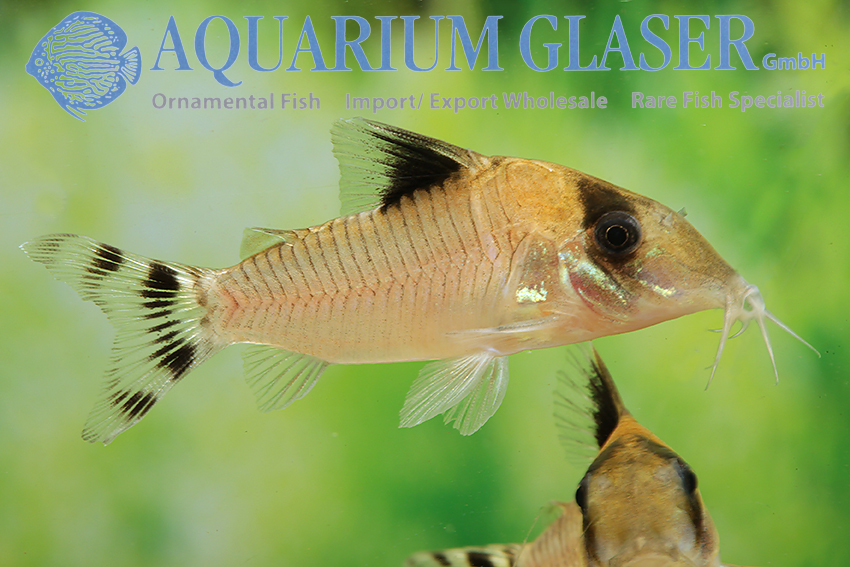
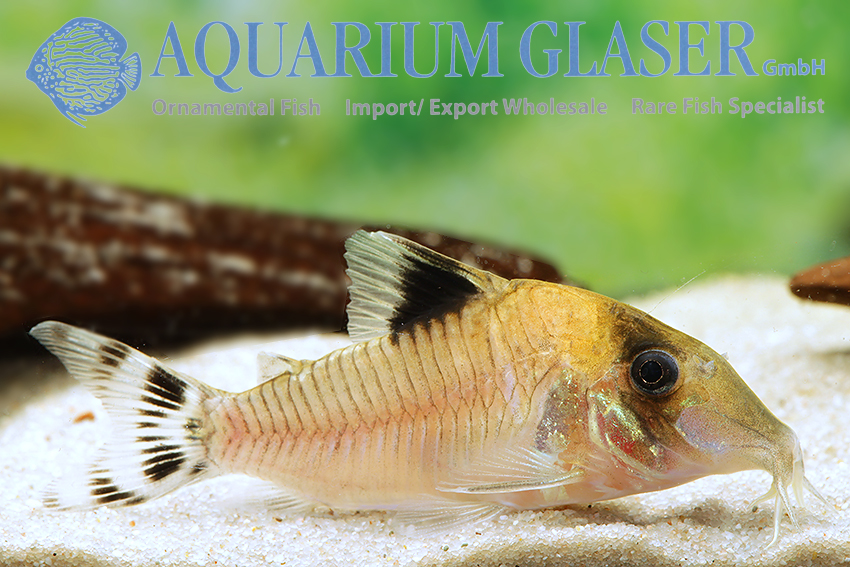
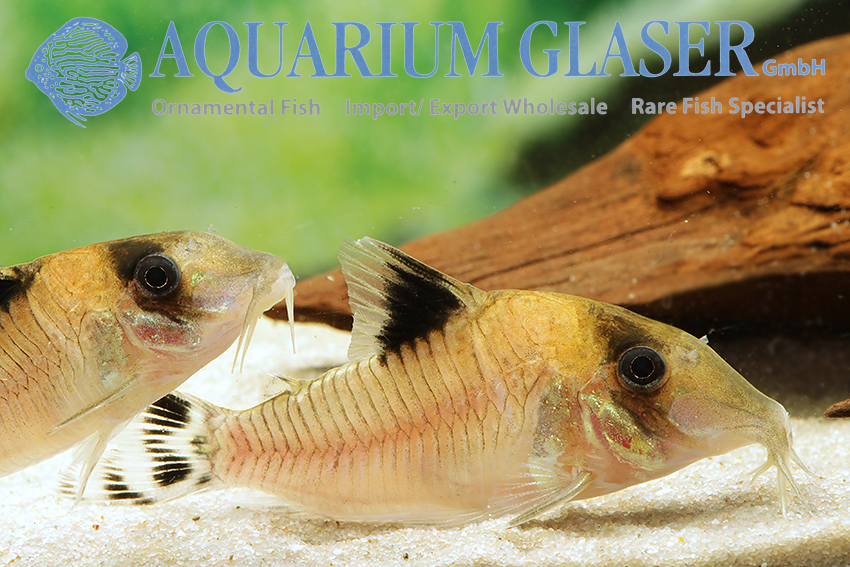
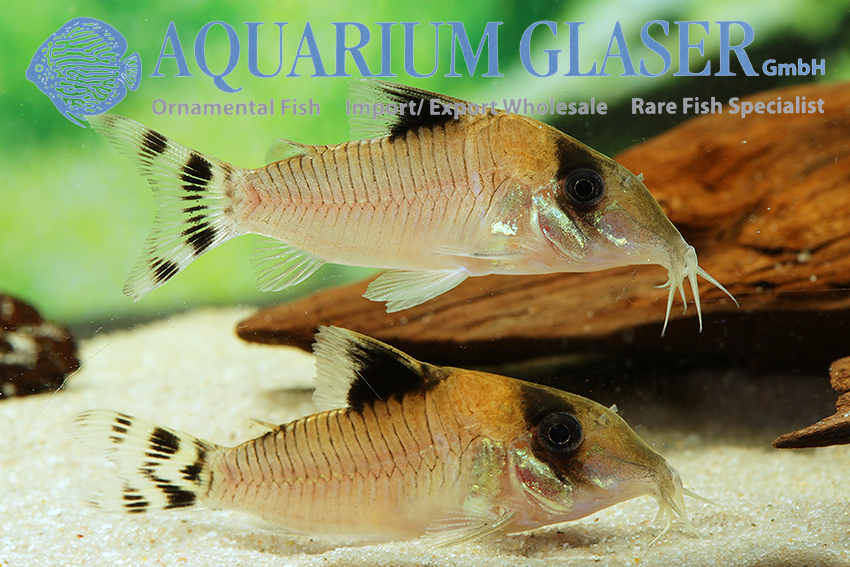
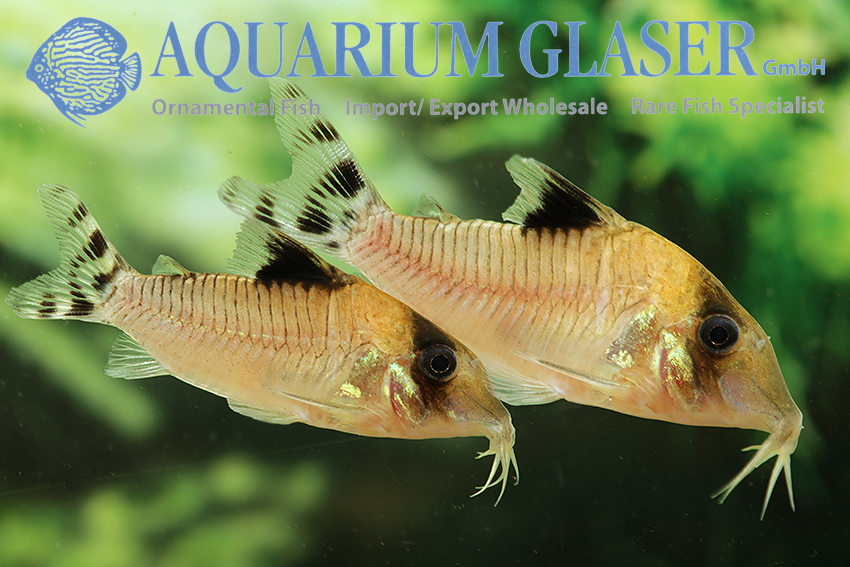
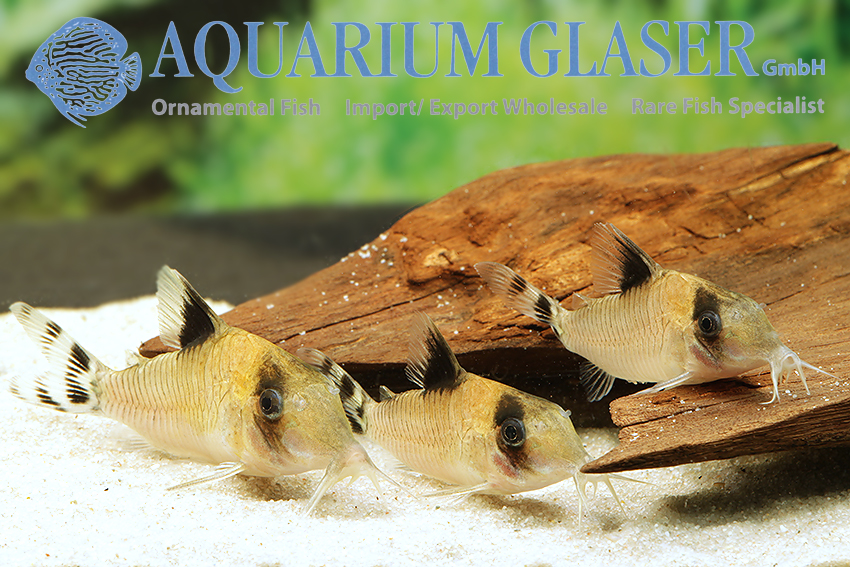
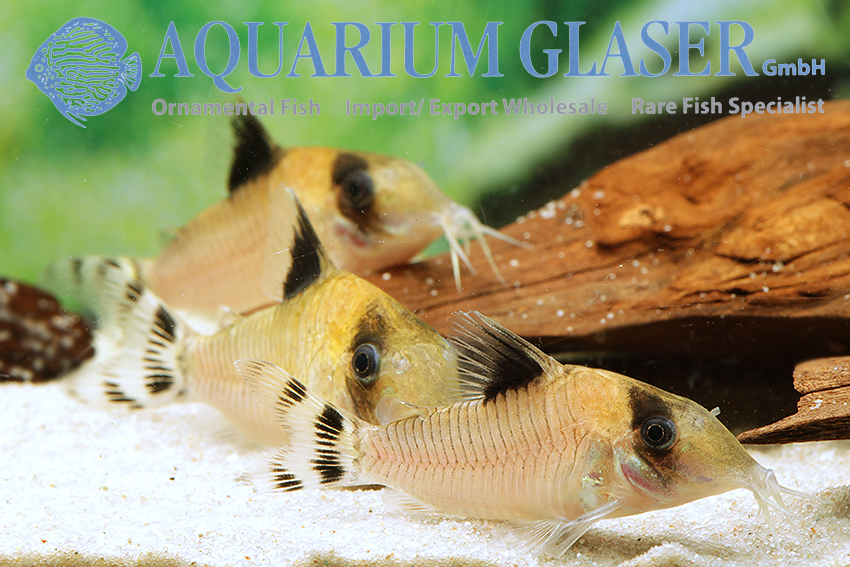
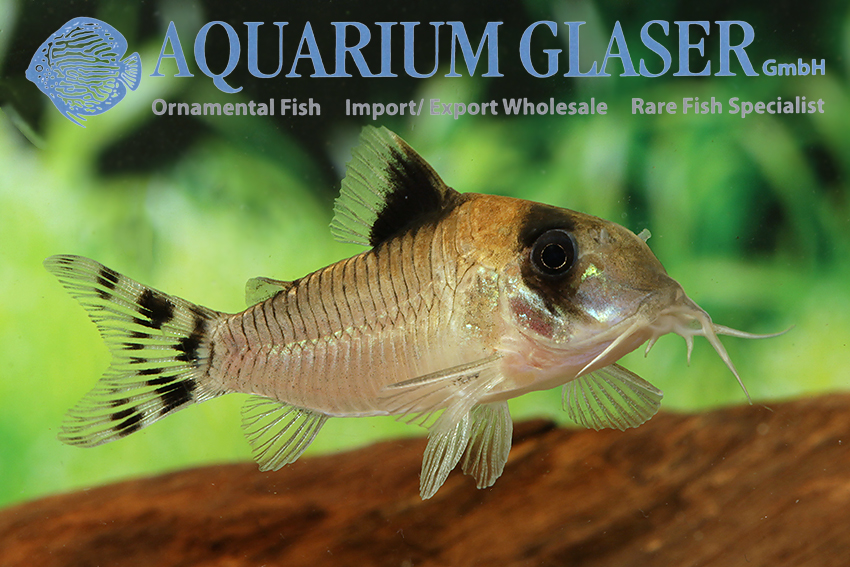
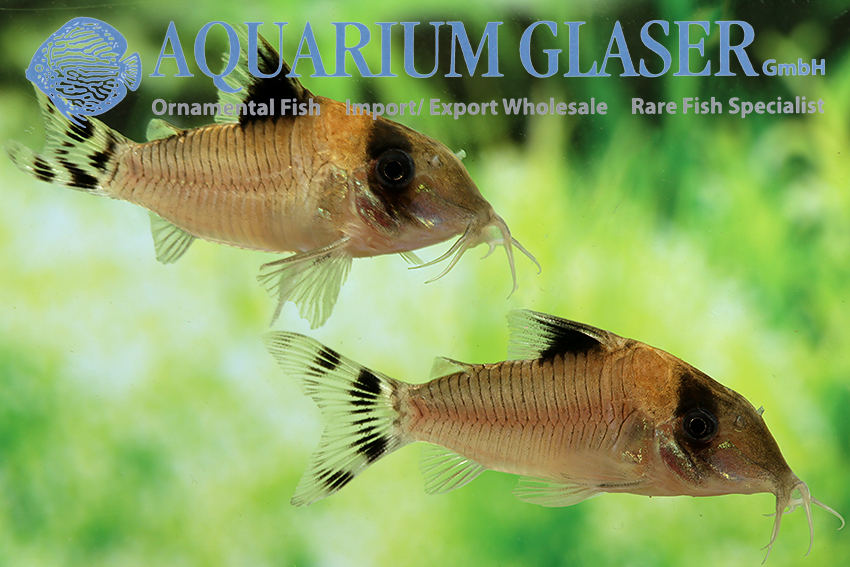
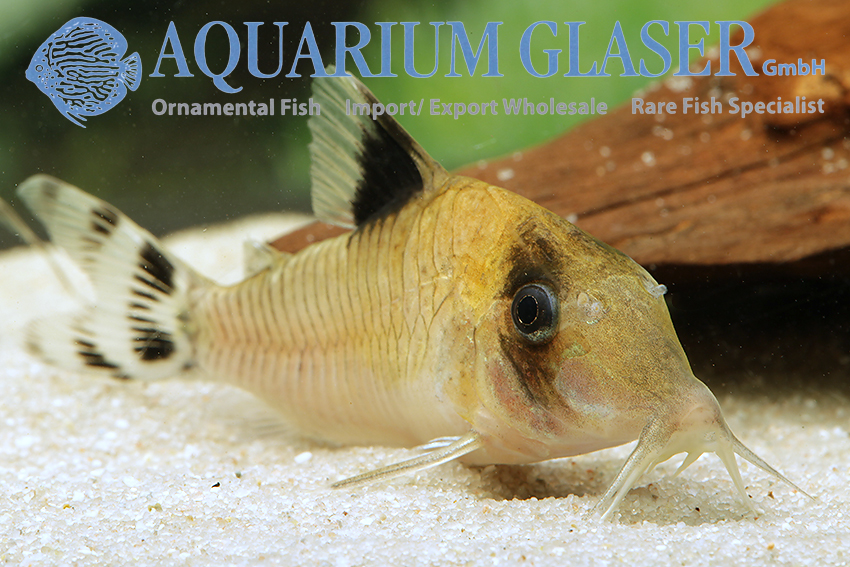
These two armored catfishes occur together in the Rio Oyapock in French Guyana; the species name condiscipulus means „schoolmate” because the two species swim together. There are hardly any ornamental fish exports from French Guyana; it is usually too expensive. But fortunately the Oyapock also flows in neighboring Brazil (state of Amapa) and so specimens from there come to us from time to time. By the way: we also received C. oiapoquensis, maybe more about that later…
For our customers: the animals have code 226105 on our stocklist. Please note that we only supply wholesale.
Text & photos: Frank Schäfer
Corydoras melanotaenia
Because of its bright yellow fins Corydoras melanotaenia surely belongs to the most beautiful armored catfishes at all. It is, so to speak, the long snout to the bronze cory type, which can be found throughout South America. In contrast to its ubiquitous cousin, C. melanotaenia is an endemic of Colombia, i.e. it occurs exclusively there.
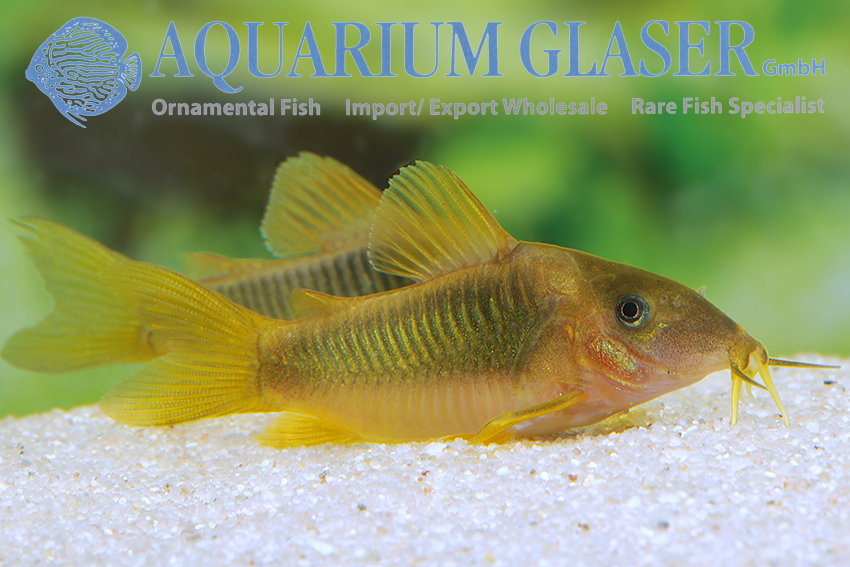
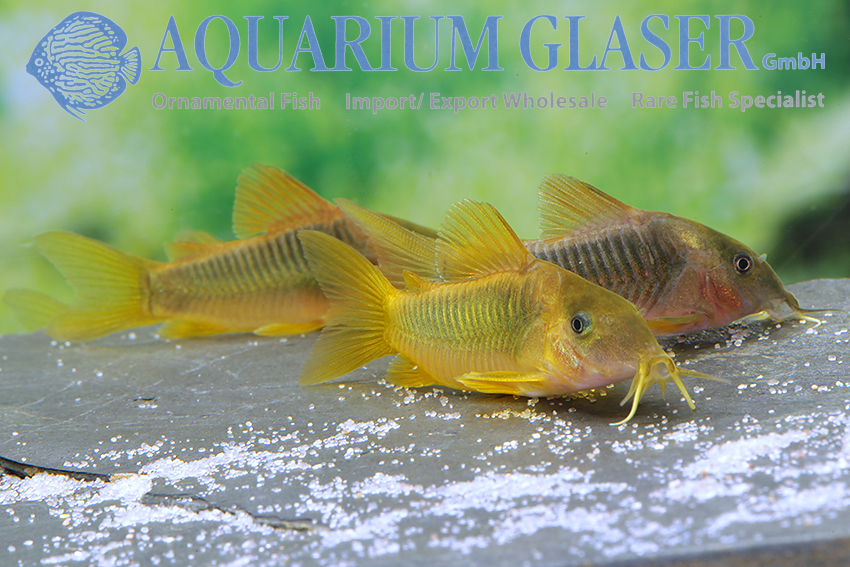
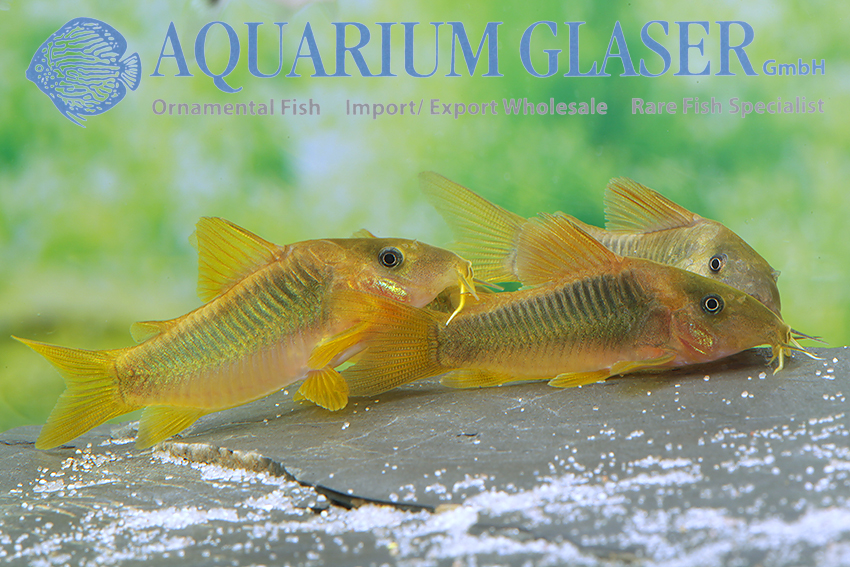
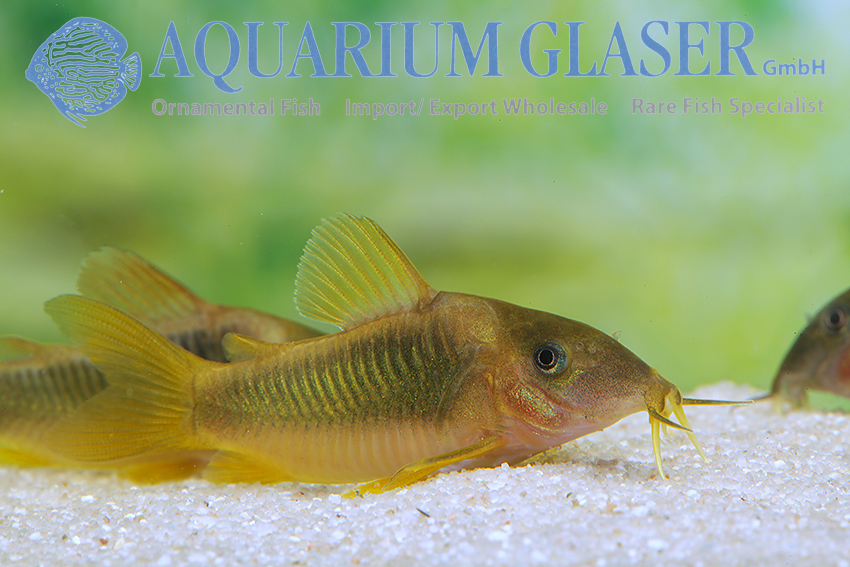
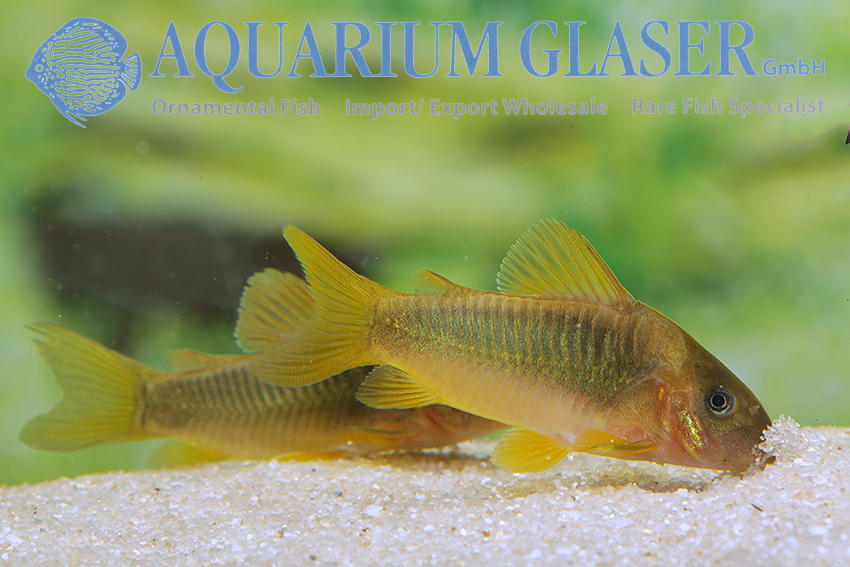
The origin of C. melanotaenia, which was already scientifically described in 1912, was unclear for a long time. It is said that the animals on which the first description was based were caught in the Rio Magdalena basin, where later expeditions searched for them in vain. Already in 1922 it was assumed that the type specimens were sent to London via Honda (this place is located at the Rio Magdalena), but in reality they came from the Rio Meta basin. In fact, to date, not a single species of Corydoras has been reported from the Rio Magdalena and it is generally agreed that C. melanotaenia comes from the Rio Meta basin.
This Corydoras grows to about 5 cm and has all the positive characteristics that make Corydoras so popular in the aquarium: a lively and completely peaceful nature and uncomplicated keeping.
For our customers: C. melanotaenia has code 235503 on our stock list. Please note that we supply exclusively to wholesalers.
Text & photos; Frank Schäfer





